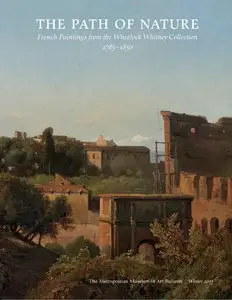The Metropolitan Museum of Art Bulletin, v. 70, no. 3 (Winter, 2013)
English | ISSN: 0026-1521 | PDF | 52 pages | 40.32 Mb
English | ISSN: 0026-1521 | PDF | 52 pages | 40.32 Mb
The Path of Nature: French Paintings from the Wheelock Whitney Collection, 1785–1850.
In 2003 the Metropolitan Museum acquired a collection of more than fifty paintings that represent a key period in European history, beginning in the 1780s with the advent of the French Revolution and concluding soon after the abdication in 1848 of France's last king, Louis-Philippe. Assembled by the New York connoisseur Wheelock Whitney between 1972 and 2000, this remarkable collection underscores the role of the natural world as a source of inspiration for European artists living on the cusp of the modern epoch, and it provides ample evidence of a rich tradition of painting out of doors, en plein air, nearly a century before Impressionism. This collection was not assembled with the intention of illustrating a complete and comprehensive history of a period or style. Rather, it came together by chance, as Whitney chose works purely on the basis of their quality, even when they bore incorrect attributions or none at all.
The Whitney Collection encompasses the full scope of paintings that would have been found in a Parisian cabinet d'amateur in the first half of the nineteenth century, including portraits and historical and genre pictures. It is renowned, however, for its concentration of plein-air oil studies. At the heart of the collection is a group of paintings by northern European artists who were drawn to Rome in the late eighteenth and early nineteenth centuries by the city's combination of antiquity and natural beauty. Several of these artists were recipients of the prestigious Prix de Rome, which enabled them to study in Italy under the auspices of the French government, and the majority of them showed their work at the Paris Salons. Yet although they may have been among the most promising and sometimes even the most successful painters of their day, many of them have been all but forgotten. One of the great strengths that artists of this period shared was their ability to engage their physical surroundings with unparalleled fluency, using skills they developed through rigorous academic training. It is enlightening to find works so immediate in their appeal that their makers are revealed as individuals, even when their biographies remain obscure.
The Path of Nature: French Paintings from the Wheelock Whitney Collection, 1785–1850
Checklist of The Whitney Collection
Notes and Further Reading
Checklist of The Whitney Collection
Notes and Further Reading
Boilly, Louis-Léopold (French, 1761–1845) | Corot, Camille (French, 1796–1879) | D'Aligny, Théodore Caruelle (French, 1798–1871) | Denis, Simon | Dunouy, Alexandre-Hyacinthe | Granet, François-Marius (French, 1775–1849) | Lorraine, Claude (French, 1604–1682) | Pallière, Léon | Rémond, Charles | Valenciennes, Pierre-Henri de (French, 1750–1819)





